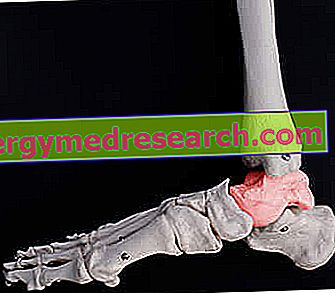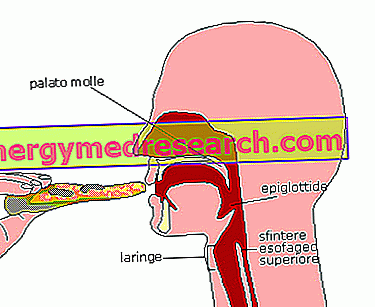
Salting food, besides being necessary to preserve some foods better, therefore also has a profound cultural meaning.
Highlights on Salt
Dietary salt Integral salt Himalayan pink salt Low-salt salt Iodized salt Diet and hypertensionSodium and healthHalotherapy - Salt therapySalt requirement
Each gram of salt contains about 0.4 g of sodium. Under normal conditions an adult needs 100-600 mg of sodium a day, equal to about 0.25-1.5 grams of salt. The diet of the Italians brings on average almost 12 grams of salt a day, exceeding ten times the real needs. Starting from these values, the simple reduction of the intake of sodium in the diet to no more than 100 mmol / day (6 g of salt) makes it possible to reduce the arterial pressure by 2-8 mmHg.
In the summer period, when sweating increases, the sodium need also increases, especially for athletes. However, in a balanced diet it is advisable not to take more than 6 grams of salt a day.
Does the Sale hurt?
If taken in excess, salt is the enemy of our health, especially in light of the latest scientific research. In particular, excessive consumption of salt can be responsible for diseases such as:
- HYPERTENSION: salt is harmful especially for people suffering from high blood pressure. Although an organism is perfectly capable of eliminating the excess of sodium, taking too much salt, in the long run, favors the onset of the disease in predisposed people.
- OSTEOPOROSIS: excess salt promotes renal calcium excretion, of which the diet is often poor. Calcium is an essential mineral for bones and its deficiency significantly increases the risk of osteoporosis.
- OBESITY: those who regularly consume salty foods run a greater risk of becoming obese. Salt is known to have no calories but it stimulates thirst which can be satisfied with sugary or alcoholic drinks. In this case it is easy to take extra calories (about 50-150 kcal per 330 ml can), which are not very filling and which you often don't realize.

LACK OF SALT : sodium is an essential mineral for our body as it regulates nerve impulse transmission, water balance, acid-base balance and membrane permeability. A reduced intake of salt in the diet can, especially in summer, favor the onset of cramps, decreasing appetite and mental lucidity.
SALT AND DIET : packaged food is one of the main obstacles to reducing sodium in the diet. Limiting the intake of salt with food is all in all easy, just take a few simple steps:
- do not salt the food.
- Use a little salt during cooking (when preparing the pasta, get used, for example, to add the salt when the cooking is finished; in this way the quantity of salt absorbed by the pasta is considerably reduced).
- Limit the consumption of salted or processed foods (sausages, cheeses, chips, etc.).
- Limit consumption of packaged foods.
- Enhance the flavor of foods with spices, lemon or traditional / balsamic vinegar.
- If the fruit is appreciated it can be consumed instead of salty snacks as a snack.
The contribution of sodium present in the water we drink every day is practically nil, given that in a liter of a common mineral water we usually find 5-15 mg of sodium.
Find out how to replace salt with a healthier dressing; watch the video: properties and recipe for gomasio
Eating often outside the home greatly increases the intake of salt in the diet: just think, for example, of the widespread habit of restaurateurs to add salt to flavor dishes, or to the almost 2 grams of sodium contained in a pound of raw ham.
It would be enough for the state to intervene by setting limits to the addition of salt in preserved foods, to save numerous lives and several million euros each year in national health expenditure. In England and especially in Finland this limitation has significantly reduced mortality from stroke. In America, where salt consumption has increased by 50% over the last 15 years, the incidence of these diseases has clearly increased.
Flavored Salt for Vegetables, Meats and Fishes
X Problems with video playback? Reload from YouTube Go to Video Page Go to Video Recipes Section Watch the video on youtube



